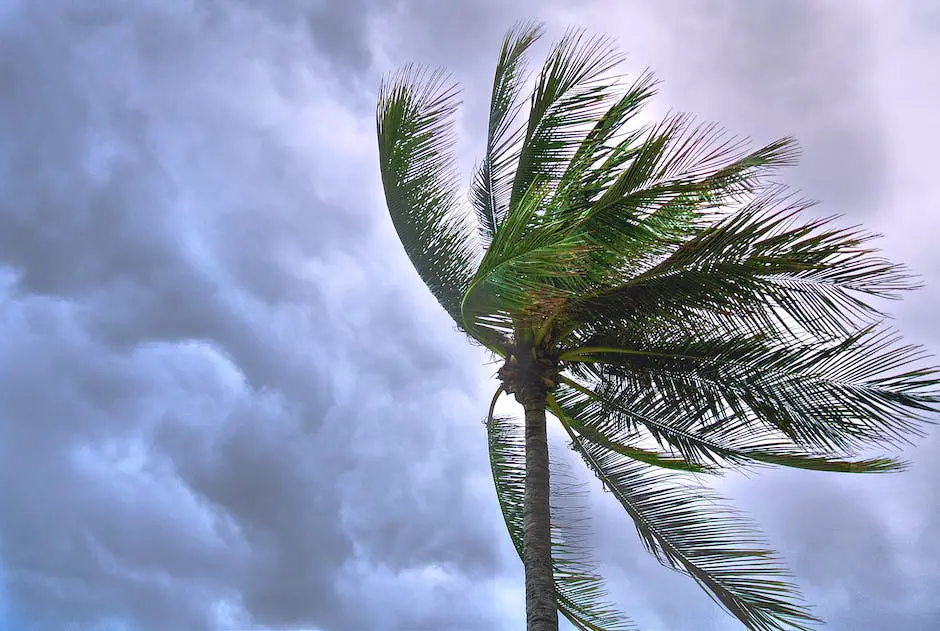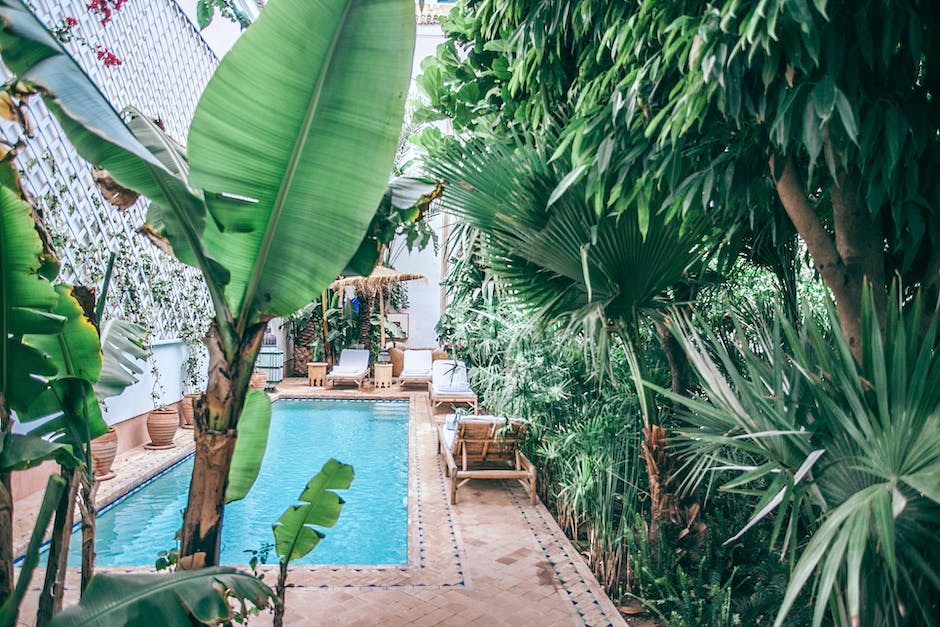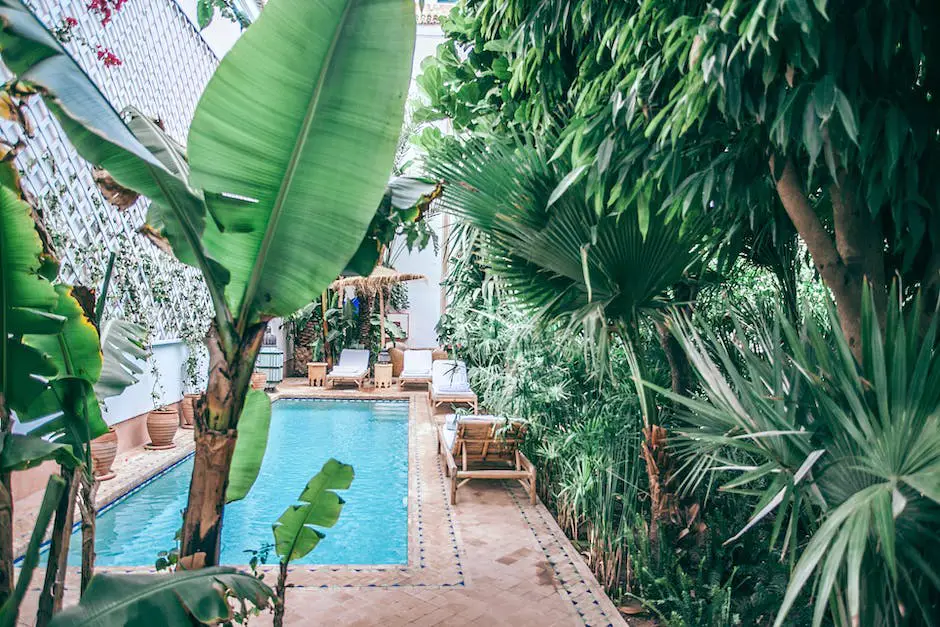When it comes to watering your palm trees, there are a few things to keep in mind. Depending on the type of palm tree, they may need to be watered once or twice a week. The best time to water them is early in the morning or later in the evening. You also want to make sure that the soil is moist but not soggy. If the soil is too dry, the leaves will start to turn brown. If the soil is too wet, the roots may rot.
There are a few things to consider when watering palm trees outdoors. The first is the weather. If it is extremely hot and dry, the tree will need more water. If it is cooler and wetter, the tree will need less water. The second is the type of palm tree. Some varieties require more water than others. The third is the size of the tree. A smaller tree will need less water than a larger one.
To water a palm tree, start by giving it a deep watering. This means watering the tree slowly and deeply, until the water runs out the bottom of the pot. Then, allow the tree to drain completely before adding more water. Water the tree every few days, or as needed. If the leaves of the tree start to turn yellow or brown, it is an indication that the tree is not getting enough water.
What is the best way to water a palm tree?
Deep watering is essential for both container palms and soil-grown palms. This means you allow the water to seep slowly into the soil around the palm’s roots. This isn’t a fast procedure. It may take an hour or even two for the 25 gallons to drip into the soil.
If you overwater your palm tree, it will begin to droop and leaves will start to rot. Sometimes you can save your plant by cutting off the dead parts and replanting it again, but if you don’t take care of it soon enough, it will die.
How many minutes should I water my palm tree
Another way to water your palm tree is to slow drip 20 gallons of water over the course of 1 -2 hours. This method allows the water to seep deep into the ground, which is beneficial for the tree roots.
Palm trees are typically drought-tolerant once they are established, but newly planted trees will need to be watered deeply twice a week during the first 2-3 months. A good quality slow release fertilizer should be applied in early spring.
How do you know if your palm needs water?
If you love your palm trees, it is important to make sure you are watering them correctly. Overwatering or not giving enough water can both be detrimental to the health of your palm tree. One way to ensure you are giving your palm the correct amount of water is to use a soil wetness meter. You can also stick your finger into the soil to check for moisture. If the first 2 inches are dry, it is typically time to water your palm tree.
While your palm is growing in spring and summer, water often and less in autumn and winter. When the weather is dry and hot, mist spray the foliage several times a day. This will keep it cool and also help deter pests.
Why are the leaves on my outdoor palm tree turning yellow?
If your palm tree leaves are turning yellow, it could be due to a lack of essential nutrients in the soil, like nitrogen, manganese or magnesium. These nutrients all help the tree stay green and grow properly. Alternatively, a pest or fungus could be causing your palm tree leaves to yellow. If you’re not sure what the cause is, it’s best to consult with a professional tree care service to get to the bottom of the issue.
Prune dead fronds and old fruit stems to keep your palm healthy and attractive. Wait until the fronds are completely brown before pruning, and use a hand pruner or sharp pruning saw for larger leaf stems.
Why are my outdoor palm trees turning brown
There can be several reasons why a palm tree isn’t getting enough water. The most common reason is that the tree is planted in an area that doesn’t have enough moisture. Other reasons can include: the tree is planted in an area with poor drainage, the tree is in a pot that is too small, or the tree is in a pot that doesn’t have proper drainage holes. If you think that your palm tree isn’t getting enough water, you should check to see if thetree is getting enough sun. If the tree is getting too much sun, it can cause the tree to dry out.
If you see that your palm tree’s leaves are brown or yellow and wilting, it’s likely that they’re dead and you should remove them. If you see broken fronds, you should remove them as well since they can damage your tree. Finally, you’ll want to remove fruit stalks of palm flowers since they take up a lot of your palm tree’s energy.
How do I keep my palm tree happy?
To grow a healthy plant, it is important to provide the right amount of light, moisture, and nutrients. Bright, indirect light is best for most plants. The soil should be loose and moist, and well-drained. Fertilizer should be applied during the growing season. Pruning helps to encourage new growth and keep the plant healthy. Natural pesticides are less toxic and more effective than chemical pesticides. Choose a container that is the right size for the plant.
Palms are unique and interesting plants that can make a great addition to any home. Here are a few tips on how to care for your palm plant:
-Avoid direct sun. Full, direct sunlight can burn the leaves of your palm and cause curling or brown leaf tips.
-Keep the soil moist. Palms like to have moist soil, so be sure to water your palm regularly.
-Pruning is important for palm health. Palm fronds can get heavy and potentially damage the trunk if they are not trimmed. Trimming also encourages new growth.
-Fertilize your palm plant every few months to give it the nutrients it needs to thrive.
What does a sick palm tree look like
If you notice that the top center stalks of your palm tree are turning brown and/or shriveling, this is a sign that your tree is not doing well. The most common cause of this problem is a lack of water. Make sure to water your palm tree regularly, and if you live in an area with a lot of sun, consider adding a layer of mulch around the base of the tree to help keep the roots cool and moist.
This is an amazing product that will help your palms, cycads and tropical plants grow lush and prevent their fronds from yellowing and curling. You can use it anywhere – in the ground or in containers. Miracle-Gro Shake ‘n Feed Palm Plant Food will provide a continuous release of plant food for up to 3 months wherever it is used!
How do I know if my palm tree is dry?
There are a few things that could be happening if your palm fronds are discoloring or wilting. It could be a lack of water, too much sunlight, or a problem with the roots. Examine your plant carefully to try and determine the cause. If it is a lack of water, be sure to water your plant more frequently. If it is too much sunlight, try moving it to a shadier spot. If the roots seem to be the problem, try replanting in fresh soil.
The main disadvantages to hand watering are the time required and the inability to use a timer. If someone is inexperienced, they may also over- or under-water the plants.
Do palm trees like misting
If you want to keep your palm happy, make sure to mist them a couple of times a week or add a humidifier nearby. If the humidity drops too low, the fronds can start to crisp and die.
Secondary nutrients like magnesium and sulfur are vital for the growth of plants, especially palm trees. Because of this, Epsom salt was often used to increase the magnesium in the soil for palms. However, too much magnesium can actually be harmful to plants, so it’s important to use the right amount.
Final Words
First, it’s important to know how often your outdoor palm trees will need to be watered. This will depend on a few factors, such as the size and type of palm tree, the climate, and the soil. To be safe, it’s best to check the soil around your palm tree every few days. If the soil is dry, it’s time to give your palm tree a good drink of water.
When watering your outdoor palm tree, be sure to give it a deep watering. This means watering the tree slowly and deeply, until the water reaches the roots. Palm trees need a lot of water, so be sure to give it enough. A good rule of thumb is to give your palm tree about 10 gallons of water per week.
It’s also important to fertilize your outdoor palm tree on a regular basis. This will help it stay healthy and thrive. Talk to your local nursery or garden center to find the best fertilizer for your palm tree.
In conclusion, following the proper steps to water your outdoor palm trees is vital to their health. By making sure to hydrate them during the warmer months and protecting them from too much moisture during the cooler months, you can keep your palm trees healthy for years to come.

My interest in trees started when I first saw the giant sequoias in Yosemite.
I was a teenager then, and I remember thinking, “I need to learn more about this.”
That moment stuck with me.
A few years later, I went on to study forestry at Michigan Tech.
Since graduating, I’ve worked in a mix of hands-on tree care and community education.
I’ve spent over ten years helping people understand how to plant, maintain, and protect the trees in their neighborhoods.
I don’t see trees as just part of the landscape.
They are living things that make a real difference in our daily lives.
